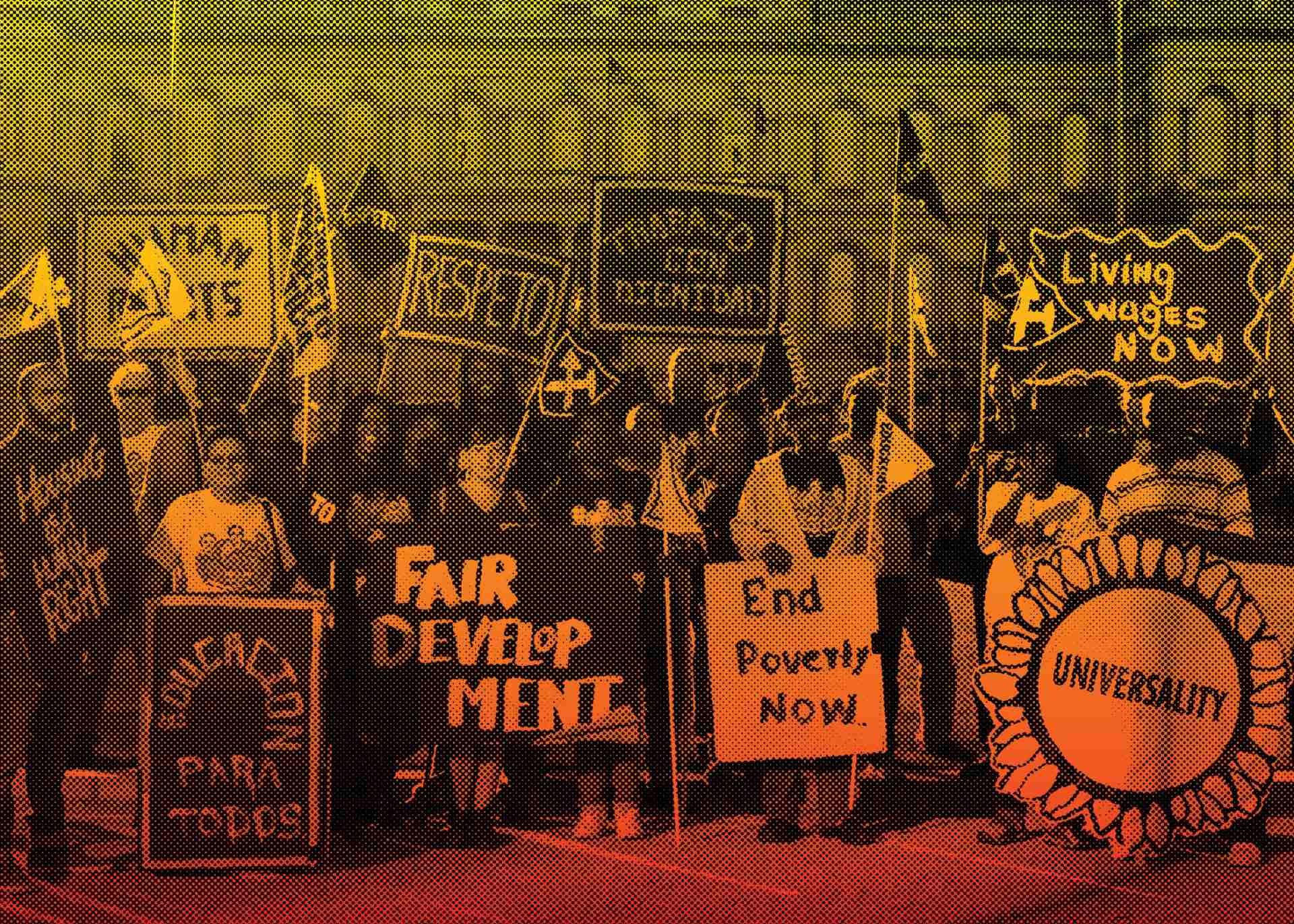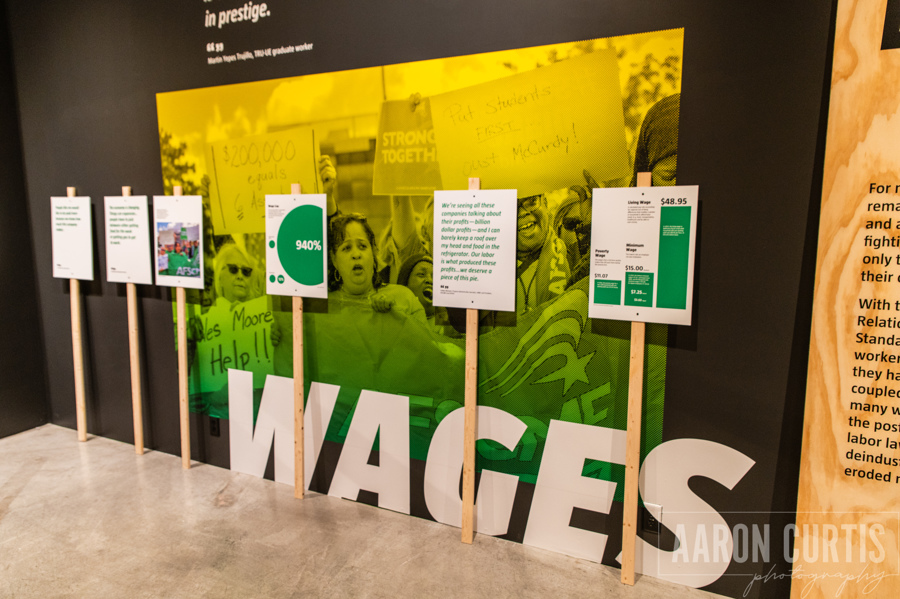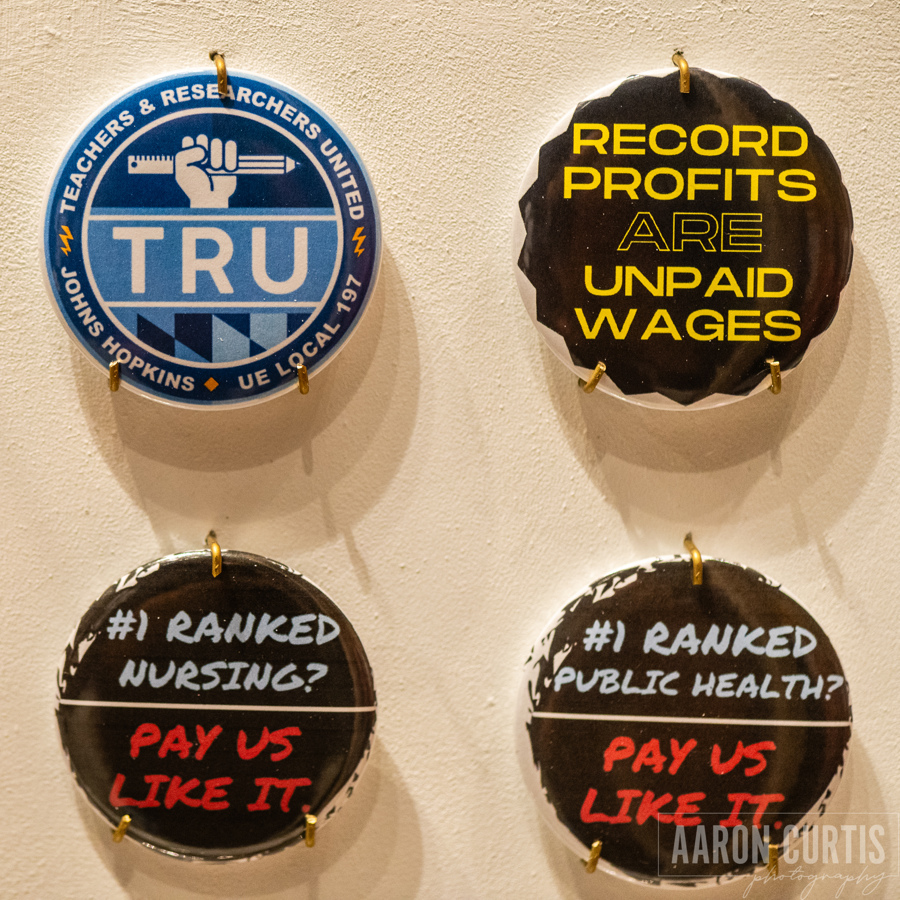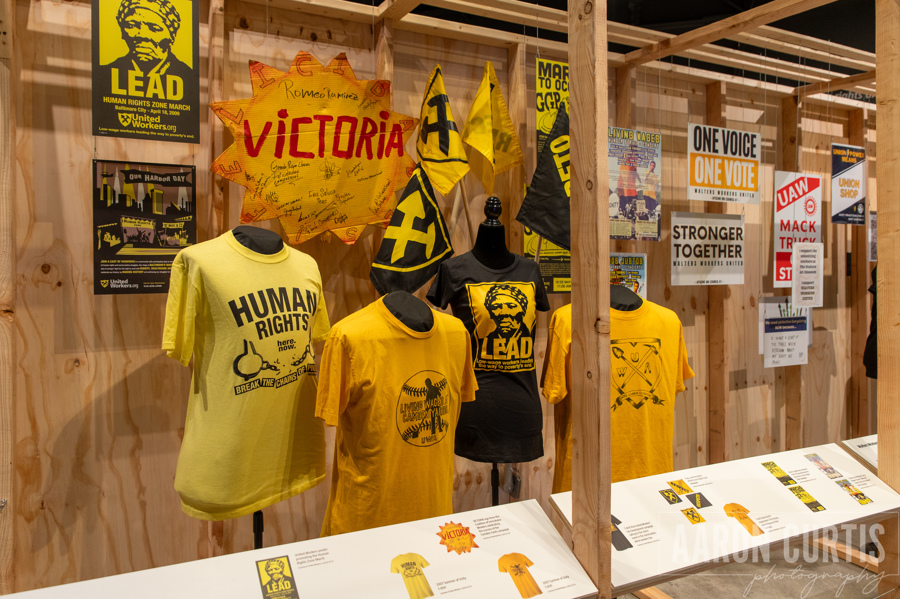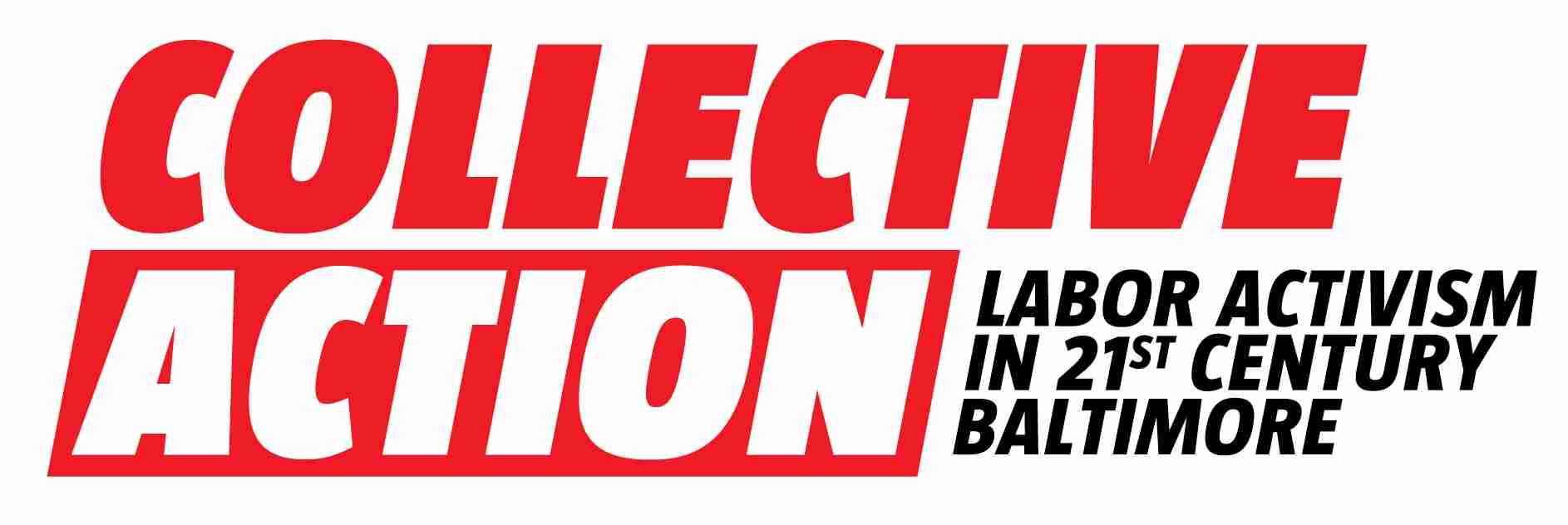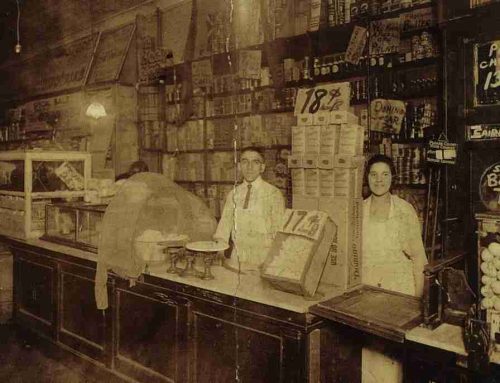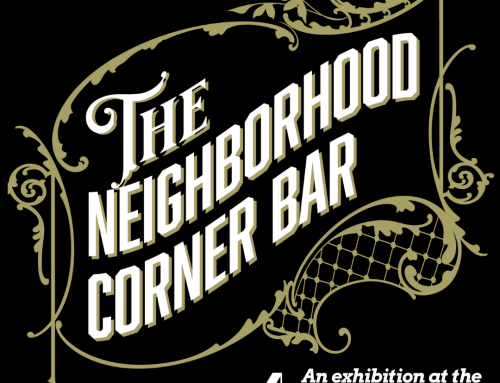Now open: COLLECTIVE ACTION: LABOR ACTIVISM IN 21ST CENTURY BALTIMORE is a bold new exhibition exploring the historic and contemporary organized labor movement.
Central to the experience of workers has been the long fight for labor rights–higher wages, improved safety, shorter hours, and a seat at the bargaining table. Currently, there is a surge of activism by a new generation of workers who are galvanizing the labor movement. Through the stories and experiences of working Baltimoreans, this exhibit will shed light on why they are organizing and explore the historical roots of this struggle.
The story of industry and labor is not a singular narrative. The complicated relationship between politics, work, class, and economics makes this topic perfect for the Baltimore Museum of Industry to explore, as a place where people come to make sense of what is happening around them in the realm of work and labor.
The exhibition will be open through 2025.
This exhibition is sponsored by: Abato, Rubenstein and Abato, P.A.; International Brotherhood of Electrical Workers Local Union 24; KSC Law; and Robert J. Patterson, with generous support from media partners WTMD and WYPR.
